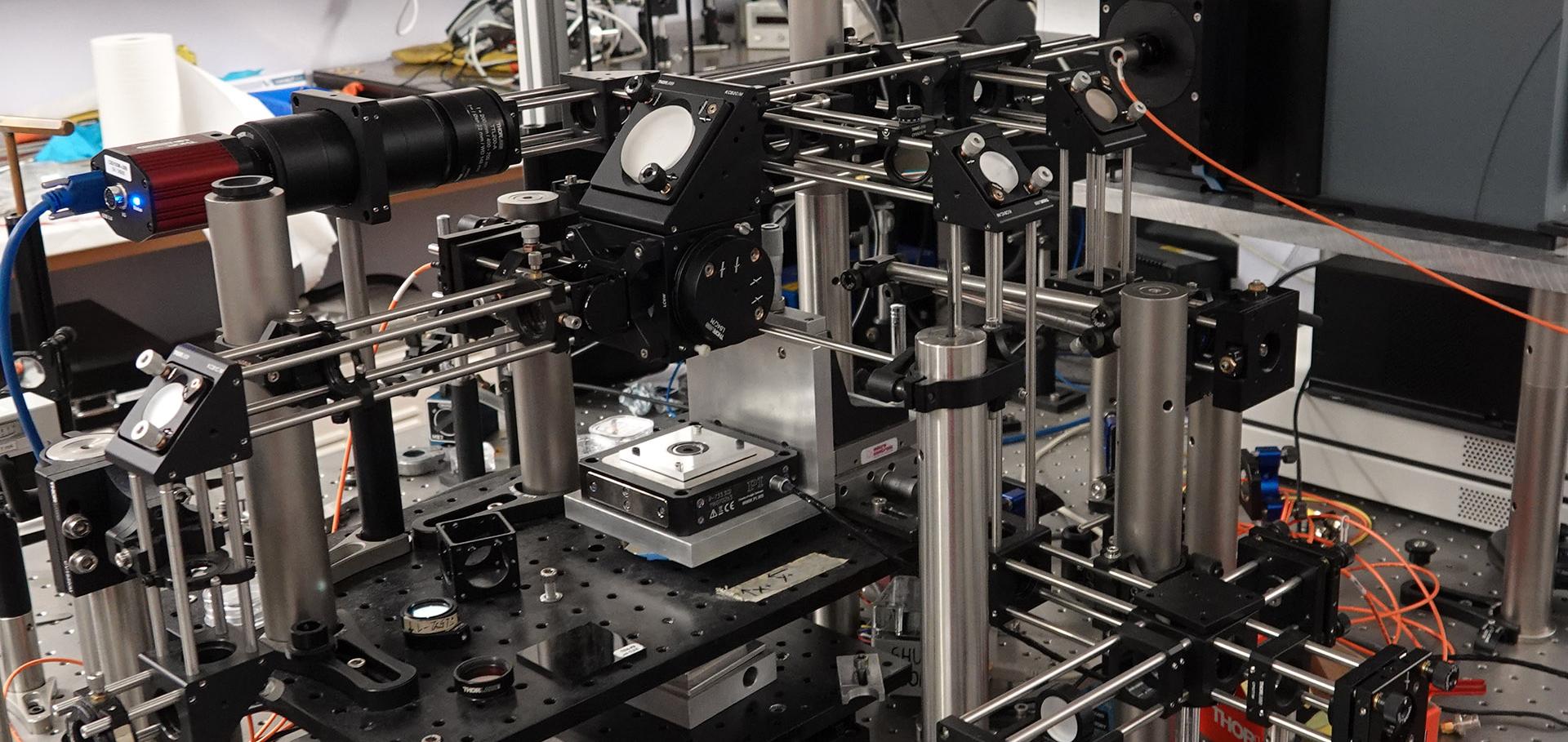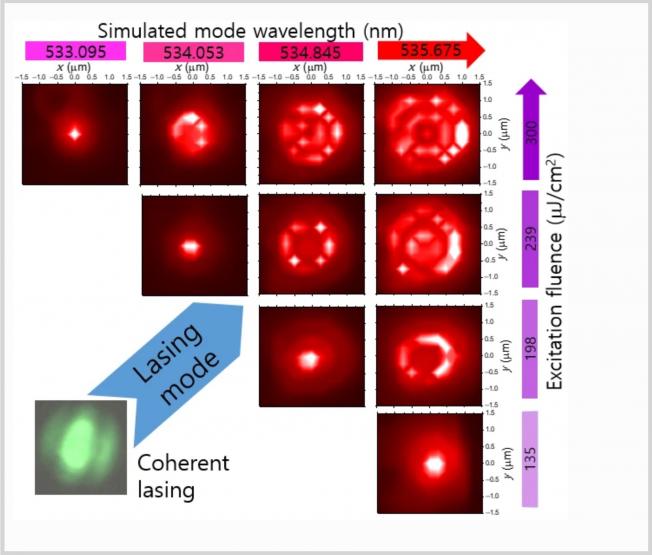Nanoscale MoS2-in-Nanoporous Au Hybrid Structure for Enhancing Electrochemical Sensing
Sensors MDPI 25:23 (2025) 7137
Abstract:
We report the fabrication of nanoscale MoS2 (nMoS2) via laser ablation in liquid and its application in electrochemical sensing. The laser ablation process fragments microscale MoS2 sheets into ~5 nm dots with stable aqueous dispersibility. Electrochemical analysis reveals that nMoS2 possesses multiple reversible redox states, enabling it to participate in redox cycling reactions that can amplify electrochemical signals. When the nMoS2 is embedded in an electrochemically inert matrix, a chitosan layer, and subsequently incorporated within a nanostructured Au electrode, the nMoS2-participating redox cycling reactions are further enhanced by the nanoconfinement effect, leading to synergistic signal amplification. As a model system, this hybrid nMoS2-in-nanoporous Au electrode demonstrates a 9-fold increase in sensitivity for detecting pyocyanin, a biomarker of Pseudomonas aeruginosa infection, compared with a flat electrode without nMoS2 loading. This study not only elucidates the redox characteristics of laser-fabricated zero-dimensional transition metal dichalcogenides but also presents a strategy to integrate semiconducting nanomaterials with metallic nanostructures for high-performance electrochemical sensing.Humidity-resilient trace hydrogen detection using AuPd-Functionalized zinc oxide nanohybrids on surface-engineered silicon substrate
Chemical Engineering Journal Elsevier 524 (2025) 168945
Abstract:
The accelerating growth of the hydrogen (H2) economy is pivotal for achieving large-scale decarbonization of current energy resources. Ensuring safe and efficient handling of this potentially hazardous resource has led to an increasing demand for fast, selective and reliable H2 sensors. In this work, we report a nanohybrid H2 sensing platform comprising uniformly dispersed AuPd bimetallic nanoparticles (BNPs) embedded in a ZnO-based metal oxide semiconductor (MOS) matrix infiltrated within an anodized porous silicon (PSi) framework. This hybrid design (PSi-MOS#AuPd) synergistically merges the strong chemisorption affinity and rapid desorption kinetics of Pd with the enhanced catalytic activity and electronic modulation imparted by AuPd interactions. Precise control over BNPs thickness (~ 8.6 nm) ensures uniform dispersion and effectively mitigates the inherent volume expansion of Pd during hydrogenation, maintaining structural integrity and catalytic efficiency. The PSi support characterized by high porosity (~1.1 μm) and superhydrophobicity (θ w = 153.6° ± 0.2°), promotes efficient gas diffusion and enhances humidity resilience. The resulting sensor exhibits remarkable performance, including high sensitivity ~46 %@50ppm, low-operating temperature (~90 °C), rapid response time (~14 s), excellent stability over 60 days and strong selectivity against interfering gases (H2S, NH3, NO2, and CO) under varying humidity conditions (25–85 % RH). This work paves the way for the advancement of H2 sensors and highlights the potential of substrate engineering and bimetallic synergy in enhancing gas sensing technology for safety-critical applications.Synergistic Rh/La Codoping Enables Trap-Mediated Charge Separation in Layered Perovskite Photocatalysts
Journal of the American Chemical Society American Chemical Society 147:42 (2025) 38599-38608
Abstract:
Two-dimensional layered perovskite oxides have emerged as promising photocatalysts for solar-driven hydrogen evolution. Although doping has been widely employed to enhance photocatalytic performance, its role in modulating the electronic structure and the local chemical environment of these materials remains poorly understood. Here in this study, we investigate the codoping of Rh and La into exfoliated nanosheets of the Dion–Jacobson perovskite KCa2Nb3O10 to enhance photocatalytic hydrogen evolution reaction (HER) activity. A substantial increase in H2 evolution rate, from 12.3 to 69.0 μmol h–1, was achieved at an optimal doping level of 0.2 wt % Rh and 1.3 wt % La. Comprehensive structural and spectroscopic analyses, including synchrotron techniques and high-resolution microscopy, revealed that Rh3+ substitutes Nb5+ to introduce shallow 4d acceptor states that mediate charge separation, while La3+ substitutes Ca2+, compensates for aliovalent charge imbalance, and modulates local lattice distortions and oxygen vacancy formation. This codoping strategy enhances charge carrier lifetime and separation efficiency through a trap-mediated mechanism. The observed volcano-shaped activity trend highlights a narrow compositional window, where electronic and structural factors are optimally balanced. These findings establish a mechanistic foundation for defect engineering in layered perovskites and offer a pathway for the rational design of photocatalysts.Room‐Temperature Collective Quantum Emission Mediated by Wannier–Mott Excitons in CsPbBr 3 Nanowires
Small Science Wiley (2025) e202500400
Abstract:
Room‐temperature collective quantum emission (RT‐CQE), enabled by many‐body interactions and phase‐synchronized dipole oscillations, offers a promising path for scalable quantum photonics. Here, superfluorescence (SF) is demonstrated in CsPbBr3 perovskite nanowires (NWs), facilitated by Wannier–Mott excitons with spatially delocalized wavefunctions and strong dipole–dipole interactions. The intrinsic quasi‐1D geometry and occasional bundling promote preferential dipole alignment along the NW axis, enabling long‐range phase coherence. Key experimental signatures, photon bunching with g2(0) ≈2, femtosecond‐scale coherence time (≈88 fs), and ultralow excitation threshold (≈210 nJ−1 cm2), confirm the onset of SF at ambient conditions. Ultrafast spectroscopy reveals bandgap renormalization, state filling, and exciton‐phonon coupling, consistent with collective excitonic behavior mediated by delocalized states. Unlike other RT‐SF mechanisms based on polarons or electron–hole liquids, the system exploits directional dipole alignment and exciton delocalization in quasi‐1D NWs, allowing coherent emission without the need for high excitation densities or complex structural ordering. These findings demonstrate that CsPbBr3 NWs can sustain RT‐SF driven by exciton delocalization and directional dipole coupling, providing a new physical platform for coherent light generation under ambient conditions.Simultaneous bright singlet and triplet emissions in CsPbBr3 nanocrystals for next-generation light sources
Materials Today Physics Elsevier 57 (2025) 101839



